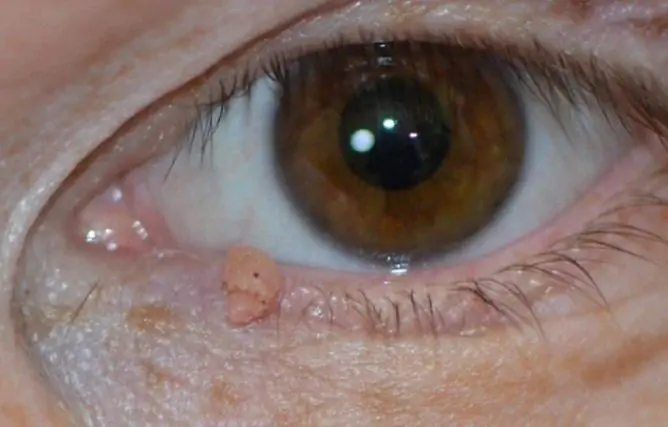Corns

As a result of prolonged wearing of tight and uncomfortable shoes, pressure or friction on the surface of the skin, extremely painful and aesthetically unattractive phenomena usually occur - corns, which are often not so easy to get rid of completely later.
Not everyone is aware of the fact that calluses actually serve to protect overly sensitive skin from damage. Ugly growths of hardened and keratinized skin cells protect the skin surface from further injury in places of increased friction and pressure. Excessive growth of corn tissue, in turn, begins to cause severe pain and becomes a real problem.
Causes of corns
The most common cause of calluses on the feet is wearing uncomfortable, tight or unsuitable shoes. But this is not the only cause of corns. According to some experts, corns in one place or another may also indicate the presence of serious diseases in the body.
Calluses located on the edges of the heels signal possible problems in the state of the vascular system. Suddenly appearing callus under the little toe on the left foot - about heart disease. The appearance of calluses on the toes in other places is characteristic of severe nervous exhaustion of the body.

A rather rare occurrence - a callus that has arisen in the middle part of the inner surface of the foot can tell about potential problems and diseases in the large intestine, and at the very early stages, when no obvious symptoms of the disease have yet appeared.
Types of corns
All calluses are divided into the following types:
- wet;
- dry;
- core;
- corns.
Calluses on the legs are found of all the types described above. In addition, so-called calluses can form on the toes, most often on the little fingers. Calluses on the legs should be distinguished from corns, in their appearance they resemble small hard tubercles, often of a yellowish tint. Calluses are usually not treated with conservative methods. Bone callus removal is performed exclusively in a medical institution by a surgical method.
Callus treatment
The need for timely treatment of corns is due to the fact that, as they grow, they begin to cause very severe discomfort and painful pain when walking (when it comes to calluses on the soles of the feet).
It is best to entrust the removal of calluses (especially core ones) to an experienced cosmetologist. In this case, you can be completely sure that the corn is completely removed and the place of its localization is processed and disinfected accordingly.
If this is not possible, you can try to remove the corn yourself at home. Before direct removal of corn, it is necessary to steam the skin in a warm solution of water with the addition of soap, soda or ammonia.
After steaming, you can apply a special remedy for calluses on the skin (in order to soften the stratum corneum as much as possible), and then start scraping it with a pumice stone or a special cosmetic float for treating the feet. After the completion of the corn removal procedure, it is necessary to disinfect the place where the corn was located with an iodine solution to prevent infection.
As folk remedies for calluses, you can recommend the following golden rules for caring for your feet:
- twice a week, be sure to treat the surface of the feet with a pumice stone immediately after taking a hygienic shower or bath;
- periodically arrange warm foot baths with the addition of milk or herbal decoction, such procedures not only help to keep the skin surface tender and soft, like a baby's, but also effectively stimulate the blood circulation in the legs;

- choose and wear shoes for everyday wear only from natural materials (leather, canvas, etc.) with low heels (no more than five centimeters);
- to prevent the appearance of calluses and pain in the legs, it is necessary to get into the habit of using special inserts and instep supports for comfortable wearing of shoes.
The treatment of wet calluses should be treated with extreme caution, since there is a high probability of infection entering the circulatory system along with the lymphatic fluid that fills the bladder. In no case should you use "useful" popular advice, and pierce or pierce the bladder to squeeze out the lymphatic fluid from there to alleviate your condition. If the bladder has opened on its own, the entire area of the corn must be treated with an antiseptic as soon as possible, preferably with iodine or brilliant green solution. After treatment, the wound should be carefully sealed with a bactericidal plaster.
YouTube video related to the article:
The information is generalized and provided for informational purposes only. At the first sign of illness, see your doctor. Self-medication is hazardous to health!







